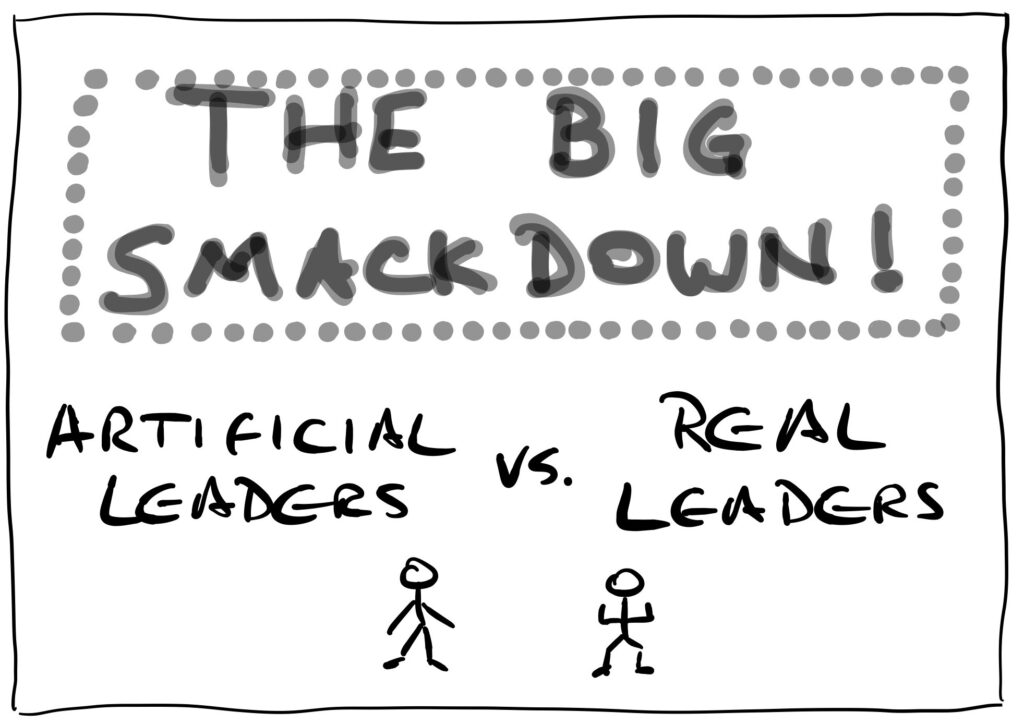
Have you tried it yet – ChatGPT? Or Google Bard or Jasper? How about YouChat?
Adoption of this new technology has been widespread and instant. The term ‘Artificial Intelligence’ is becoming so ubiquitous, that we risk not breaking those two words down and remembering the significance of the adjective – ‘Artificial.’
It has prompted me to think about the combination of ‘Artificial’ with another word – Leadership.
What would you say is the difference between Artificial Leadership and Real Leadership? How about this . . .
Artificial leaders are those who focus solely on achieving short-term goals through manipulation and control, often using fear or intimidation to achieve their objectives. On the other hand, authentic leaders prioritize building genuine relationships with their followers, fostering a culture of trust and transparency, and encouraging growth and development in their team members. They are more focused on creating long-term value and are driven by a sense of purpose and meaning.
That, my friends, is word for word the response that ChatGPT gave me. And I would say it is amazingly on target. Riffing off ChatGPT’s ‘thoughts’…here’s my quick list of distinctions between Real and Artificial Leadership:
| Real Leaders… | Artificial Leaders… |
| Use influence | Use control |
| Don’t need a title | Rely on their title for authority |
| Humbly recognize their own humanity and ability to make mistakes | Strive to appear to know everything and do everything perfectly |
| Care for those that follow them | Care mostly for what their followers can do for them |
| See themselves as stewards for what and who has been entrusted to their leadership | See themselves as entitled to their position and its perks |
| Recognize they have to earn the trust of others | Expect everyone to trust them |
| Are consistently the same person, regardless of the size or make-up of their audience | Change who they are to please their audience |
Those are some of the first differences that came to my mind. How about you? What would you say distinguishes real leaders from fake ones? Surely you have experienced both.
Let me close with a few prompts for leaders who want to keep it Real (I’m not shamelessly promoting my book again, but in it I talk more extensively about all this).
One of the biggest faults I’ve heard with AI is that it has no heart or soul. This cannot help but be true. After all artificial intelligence is, at its core, nifty manipulation of data. A database or machine cannot feel true emotions (though it can fake them really well), and it cannot use all of its senses to read people, engage with them, and meet them where they are.
In the same way, real leaders engage their leadership with more than just their intellectual know-how.
- They recognize the role their bodies play in messaging to those around them (chapter 3).
- They feel their own and others’ emotions and engage the hearts of their followers (chapter 5).
- They know who they are and how their outside – what others see – matches their inside – what they know to be true about themselves (chapter 6).
Just yesterday, a CEO who I consider to be a Real Leader relayed a conversation he had with one of his reports about how the guy was showing up on Zoom calls:
“I told him that he shows up grumpy, like a curmudgeon. And the mood he projects will influence his team. If he is negative, his team will tend to feel and be negative too.”
This is a simple example of a Real Leader, one who is aware and tuned into emotions and their impact on leadership. AND he was able to confidently and calmly speak directly to his report about his observation.
Stay intentional with your growth as a leader. And if you have leaders under you, keep challenging them to be real, authentic leaders. Our world needs more of them.
Do you want to develop more Real Leaders within your company? Give us a call. At McKinnon Leadership Group, we challenge leaders to be less artificial, and more aware and authentic.